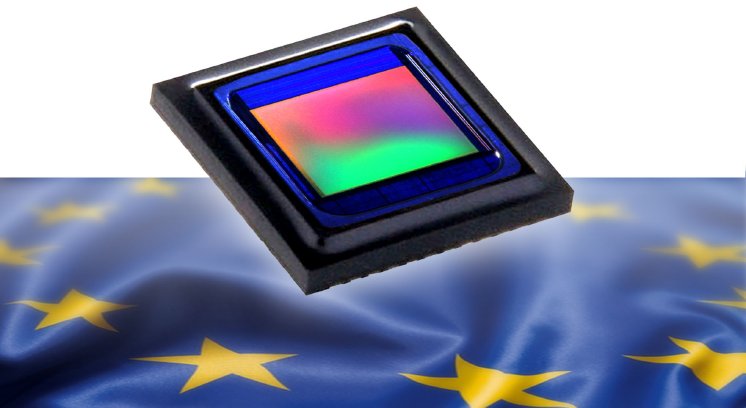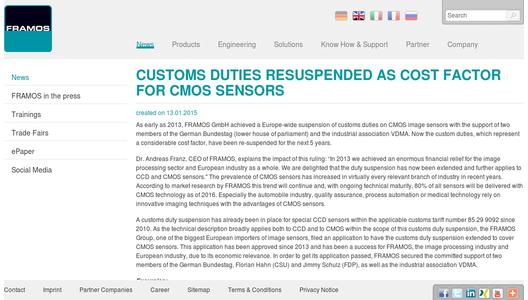Dr. Andreas Franz, CEO of FRAMOS, explains the impact of this ruling: “In 2013 we achieved an enormous financial relief for the image processing sector and European industry as a whole. We are delighted that the duty suspension has now been extended and further applies to CCD and CMOS sensors." The prevalence of CMOS sensors has increased in virtually every relevant branch of industry in recent years. According to market research by FRAMOS this trend will continue and, with ongoing technical maturity, 80% of all sensors will be delivered with CMOS technology as of 2016. Especially the automobile industry, quality assurance, process automation or medical technology rely on innovative imaging techniques with the advantages of CMOS sensors.
A customs duty suspension has already been in place for special CCD sensors within the applicable customs tariff number 85.29 9092 since 2010. As the technical description broadly applies both to CCD and to CMOS within the scope of this customs duty suspension, the FRAMOS Group, one of the biggest European importers of image sensors, filed an application to have the customs duty suspension extended to cover CMOS sensors. This application has been approved since 2013 and has been a success for FRAMOS, the image processing industry and European industry, due to its economic relevance. In order to get its application passed, FRAMOS secured the committed support of two members of the German Bundestag, Florian Hahn (CSU) and Jimmy Schulz (FDP), as well as the industrial association VDMA.
Excursion:
Import of goods with the correct customs tariff class
Allocating imported goods into the correct customs tariff class is a complicated task, especially when a range of applicable tariff groups exist. A typical example in this regard is the correct allocation of imaging sensors, especially CCD and CMOS sensors. As all of the main functional assemblies are housed on a chip, it is reasonable to allocate CCD and CMOS to tariff group 8542 for “Integrated circuits” and thus to account for them as exempt from duty. However, the usual interpretation applied by customs officials is that this tariff group is not applicable to these components, since almost all sensors commonly used nowadays also contain purely optical elements (micro lenses, colour filters) without an electrical input or output signal. According to this interpretation, this type of imaging sensor is not an integrated circuit. The sensors are instead to be allocated to tariff group “8529 – Parts for television cameras” and are therefore subject to a hefty rate of duty.


